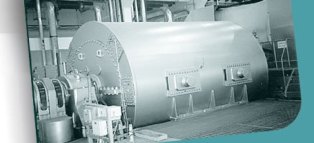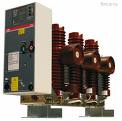Gaseous dielectrics
The main gaseous dielectrics used in electrical engineering are: air, nitrogen, hydrogen and SF6 (sulfur hexafluoride).
Compared to liquid and solid dielectrics, gases have low values of dielectric constant and, high resistivity and low electrical strength.
The properties of gases in relation to the properties of air (in relative units) are given in the table.
Properties of gases in relation to the properties of air
Characteristic
Air
Nitrogen
Hydrogen
Elegas
Density
1
0,97
0,07
5,19
Thermal conductivity
1
1,08
6,69
0,7
Specific heat
1
1,05
14,4
0,59
Electrical strength
1
1
0,6
2,3
 Air is used as a natural insulation between live parts of electrical machines and power lines. The disadvantage of air is its oxidizing power due to the presence of oxygen and low electrical strength in uneven fields. Therefore, in sealed devices, air is rarely used.
Air is used as a natural insulation between live parts of electrical machines and power lines. The disadvantage of air is its oxidizing power due to the presence of oxygen and low electrical strength in uneven fields. Therefore, in sealed devices, air is rarely used.
Nitrogen Used as insulation in capacitors, high voltage cables and power transformers.
 Hydrogen has a lower dielectric strength than nitrogen and is mainly used to cool electrical machines.Replacing air with hydrogen leads to a significant improvement in cooling, since the specific thermal conductivity of hydrogen is much higher than that of air. Also, when hydrogen is used, frictional power losses against gas and ventilation are reduced. Therefore, hydrogen cooling makes it possible to increase both the power and efficiency of the electric machine.
Hydrogen has a lower dielectric strength than nitrogen and is mainly used to cool electrical machines.Replacing air with hydrogen leads to a significant improvement in cooling, since the specific thermal conductivity of hydrogen is much higher than that of air. Also, when hydrogen is used, frictional power losses against gas and ventilation are reduced. Therefore, hydrogen cooling makes it possible to increase both the power and efficiency of the electric machine.

The most common in sealed installations is derived SF6 gas... It is used in gas filled cables, voltage dividers, capacitors, transformers and high voltage circuit breakers.
 The advantages of SF6 gas-filled cable are small electrical capacity, that is, reduced losses, good cooling, relatively simple design. Such a cable is a steel tube filled with SF6 gas, in which a conductive core is fixed with electrically insulating spacers.
The advantages of SF6 gas-filled cable are small electrical capacity, that is, reduced losses, good cooling, relatively simple design. Such a cable is a steel tube filled with SF6 gas, in which a conductive core is fixed with electrically insulating spacers.
Filling transformers with SF6 makes them explosion-proof.
SF6 gas is used in high-voltage circuit breakers—SF6 circuit breakers—because it has high arc-suppression properties.
